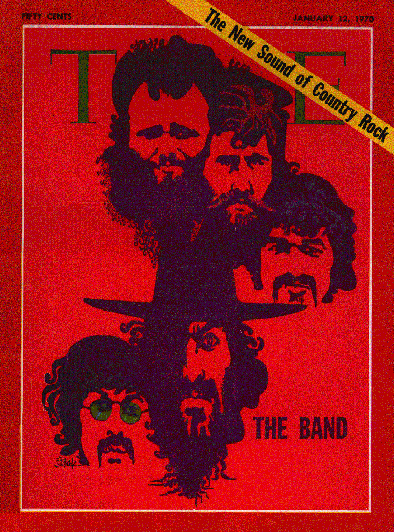Saturday, May 13, 1978.
THE LAST WALTZ. Rock concert documentary. Music by The Band (Rick Danko, Levon Helm, Garth Hudson, Richard Manuel, Robbie Robertson). Directed by Martin Scorsese. Running time: 115 minutes. General entertainment.
“THERE WAS DINNER FOR 5,000, a waltz orchestra, a hell of a party and some friends showed up to help us take it home.” Robbie Robertson is remembering.
“But they are much more than friends. They are some of the greatest influences on music and on a whole generation.”
The Last Waltz, a filmed record of The Band’s last concert, is like a funny story that is not so funny in the retelling. You really had to have been there.
“There” was a musical era, roughly 1965 to 1975. Simon Fraser University student Mary Kathleen Hartman, 20, was “there,” and she loved the picture.
“It was great,” Hartman said. “Really terrific. It was the best rock concert movie I’ve ever seen.”
Yes? So, what was it all about?
“It was, like, Woodstock, 10 years after.”
Director Martin Scorsese knows all about Woodstock. Eight years ago, he was part of the editing team that put director-cinematographer Michael Wadleigh’s great rock-doc on the screen.
The Last Waltz reflects Scorsese's familiarity and involvement with the rock scene. His coverage of The Band’s farewell bash was planned down to the finest detail. The result is a fluid, visually interesting film, one that is in tune, in motion and in focus throughout.
At its centre is The Band, four Canadians (Robertson, Rick Danko, Garth Hudson, Richard Manuel) and an American (Levon Helm) who came together in in 1960, made the cover of Time magazine in 1970 (“Canada’s Contribution to Country Rock”) and finally decided to call it quits in 1976.
“There” was their farewell concert, “a hell of a party” held in San Francisco's Winterland Auditorium on (U.S.) Thanksgiving Day. Scorsese’s professionalism notwithstanding, the film will attract an audience not for its photography, but for its performances.
Among the “friends” appearing on the 115-minute program are Paul Butterfield, Eric Clapton (guitar duelling with Robertson), Neil Diamond, Bob Dylan, Emmylou Harris, Ronnie Hawkins, Dr. John, Joni Mitchell, Van Morrison, The Staples, Ringo Starr, Muddy Waters, Ron Wood and Neil Young.
That said, it’s The Band’s show. By themselves, they perform 12 numbers and provide the backing for all of the guest artists. Between numbers, Scorsese intercut interview footage with The Band’s men, reminiscing about their 16 years “on the road.” Unlike that of many rock stars, their conversation is bright, lucid and genuinely funny.
On stage, despite the party atmosphere, the musicians work hard to put on a good show. As in 1970’s Woodstock, the final number brings everyone together to sing The Band into retirement.
Ultimately, whether or not you enjoy the film comes down to whether or not you enjoy the music. I don’t. I wasn’t “there.”
If, on the other hand, The Band's guest list reads like a catalogue of your record collection, then you’re in luck. The Last Waltz is for you.
* * *
SOUND IDEA: According to the entertainment trade paper Variety, The Last Waltz “is the first film to use a 24-track recording system mixed down to four-track Dolby and the result will help to bring theatres out of the audio dark ages."The dark ages will last a little longer in Vancouver. Although Famous Players has a couple of Dolby-equipped houses in town, they are otherwise occupied at the moment. Locally, The Last Waltz is a monaural movie.
The above is a restored version of a Province review by Michael Walsh originally published in 1978. For additional information on this archived material, please visit my FAQ.
Afterword: As is often the case with musical groups, The Band’s farewell was not final. In 1983, after the personable Robbie Robertson moved on to a solo career as a movie producer, the four remaining members of the group returned to the touring circuit. They were not as successful as they’d hoped. In 1986, Richard Manuel committed suicide following a concert in Florida. After Richard Danko’s death in 1999, the group was no more.
For Martin Scorsese, The Last Waltz was a cheerful coda to the first act of his directorial career. After an apprenticeship with low-budget filmmaker Roger Corman — 1972’s Boxcar Bertha — and critical acclaim for his independent urban drama Mean Streets, he’d had a solid success with the romantic comedy Alice Doesn’t Live Here Anymore (1974). Just six weeks before The Last Waltz opened in Vancouver, we saw the arrival of his major artistic breakthrough, the cinematic IED Taxi Driver. Hard not to notice, the gritty tale of a Vietnam war veteran’s descent into madness earned Oscar nominations in the best picture, actor (Robert DeNiro), supporting actress (Jodie Foster) and music (Bernard Herrmann) categories.
Scorsese was a force to be reckoned with in a changing industry. In their influential 1979 book The Movie Brats: How the Film Generation Took Over Holliwood, Michael Pye and Lynda Myles place him on a list that includes Francis Coppola, George Lucas, Brian DePalma, John Milius and Steven Spielberg. Earlier this week (November 19, 2018), Scorsese attended a tribute in his honour at New York’s Museum of Modern Art. The Last Waltz is the first of many Scorsese feature reviews that I will be posting to Reeling Back in the weeks and months to come.
